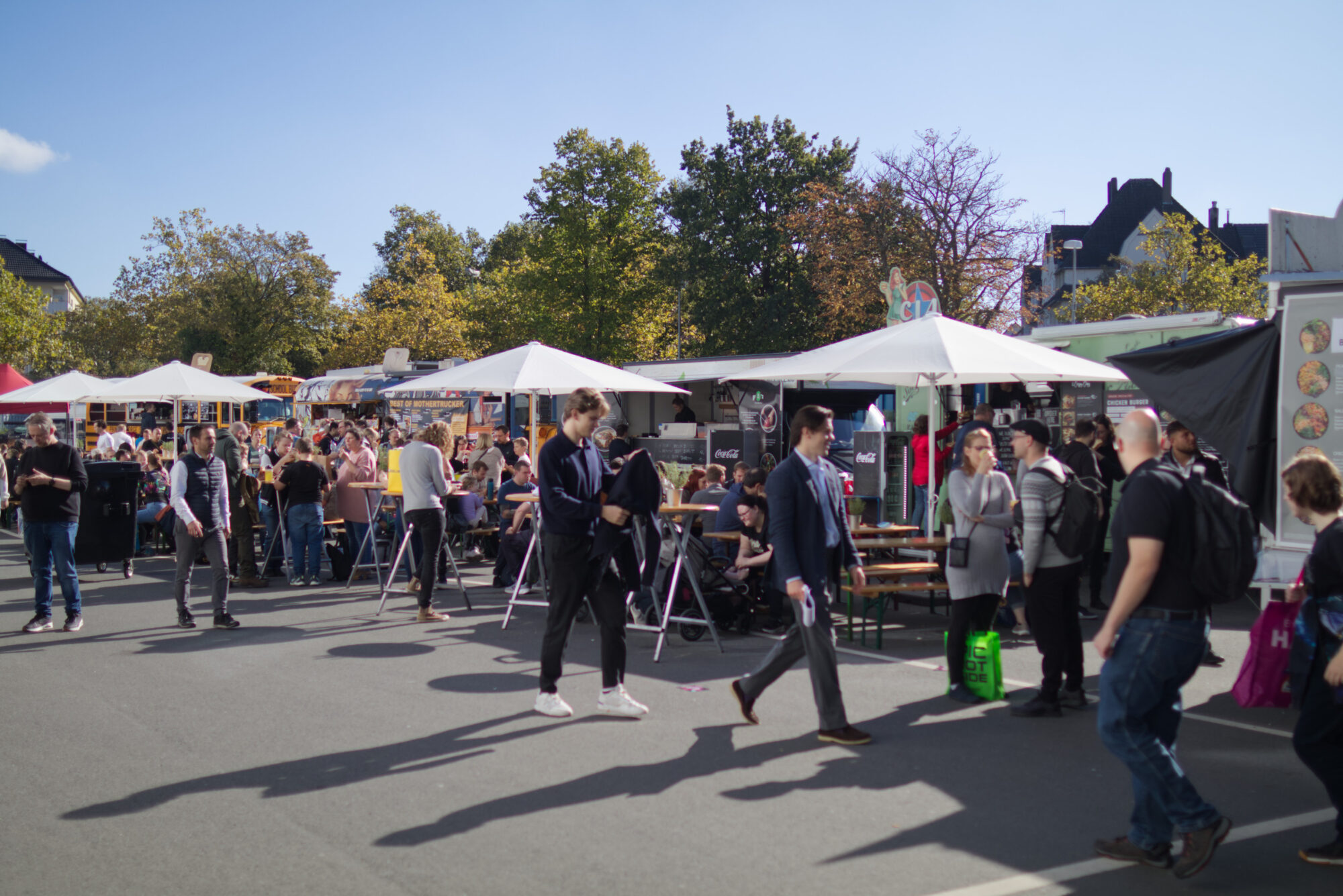Saturday at SPIEL Essen started lovely for me: with a cloudless sky and the sun shining. The weather this year is a bit unusually chilly for SPIEL as most years the convention somehow manages to have good luck and nice weather. I can’t really remember a single SPIEL where there was rain going on … anyway, while the morning turned out cold, people were running around in T-shirts by lunch time.
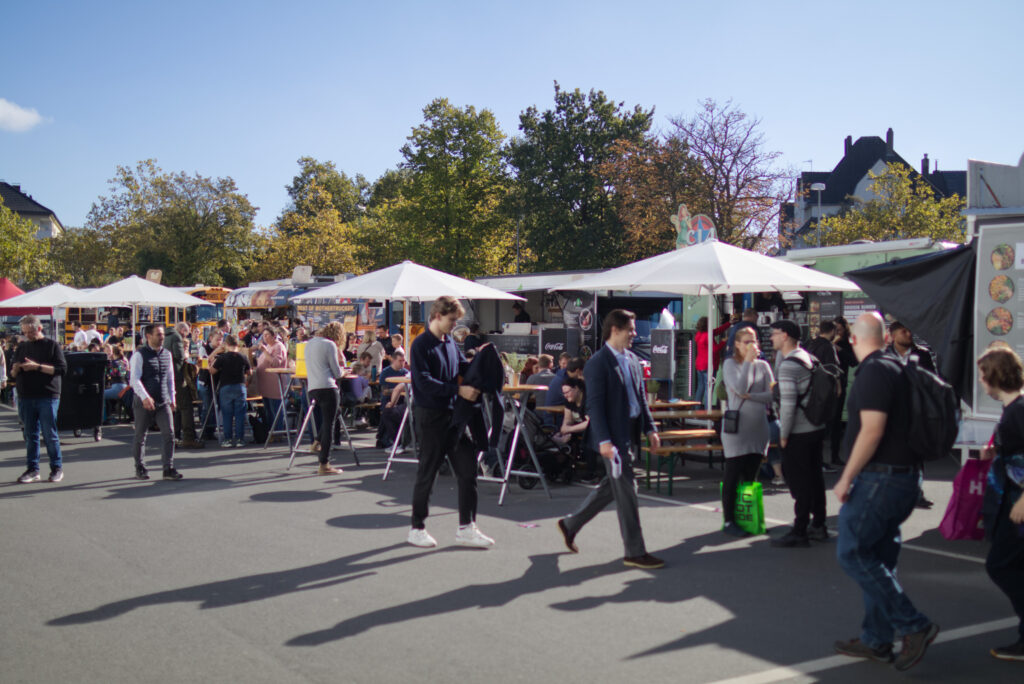
This time, I headed straight for Tea Garden as I had completely missed out on it on Thursday. Tea garden is a lovely themed deck builder combined with various typical Euro elements. Each player’s houses on the map produce tea leaves of varying qualities that can be used as currency to buy more powerful action cards or be sold off to the caravans for various bonuses. Unspent tea leaves age and depreciate unless they have been fermented which makes them useful for other things like having an extra action in a turn.
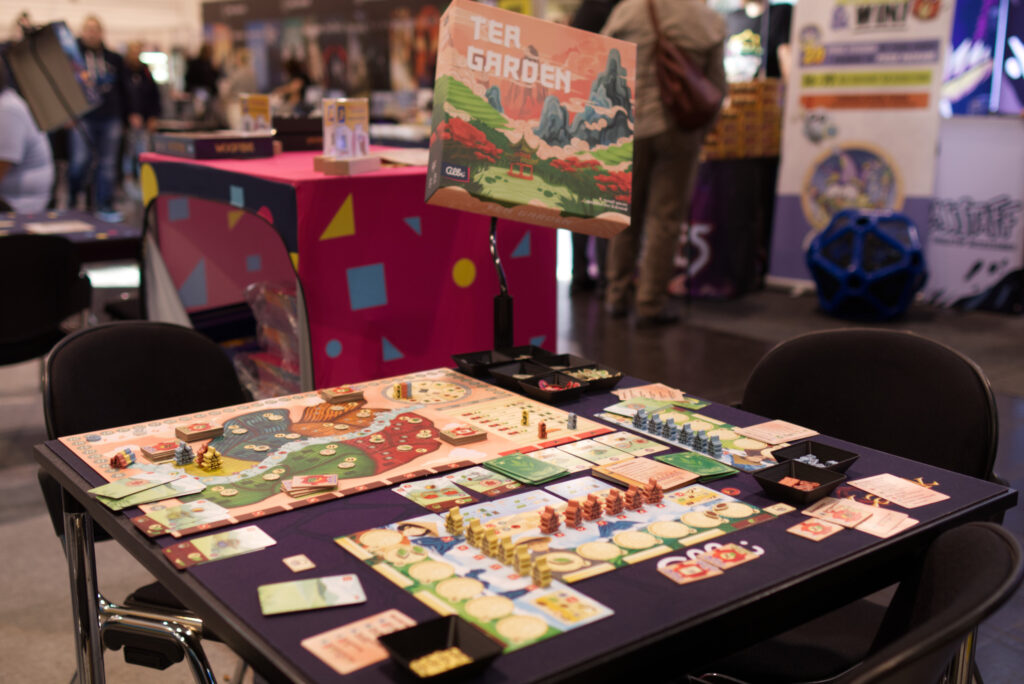
When it’s a player’s turn, they play one or multiple cards into the leftmost free slot of the four action slots printed on their personal board and then take an action with the combined power of the cards. So playing 2 ones and a two means do an action of power four. With these players can build new houses to produce tea during the income phase or perform various other actions. Most cards also show either a teapot or a symbol of a secondary bonus action and only the symbol on the top most card in each stack is active. Different colours of teapots need to already be in the slots when the player tries to buy new cards for the deck while the bonus actions to things like move the player along a boat track to get some one-time bonuses.
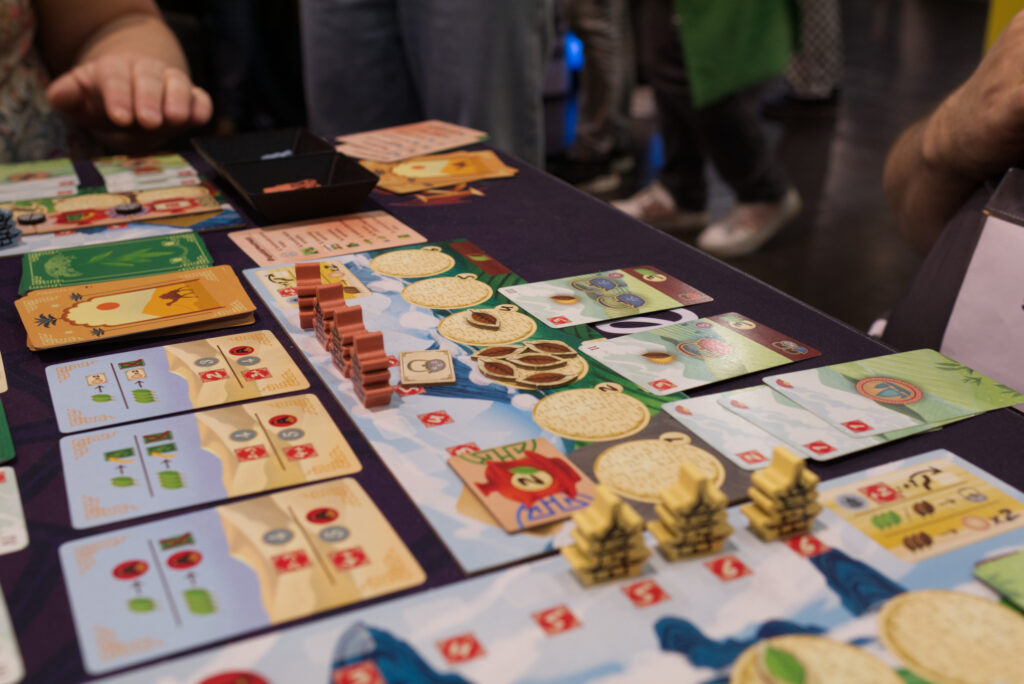
Besides the card combining mechanism, Tea Garden consists of the typical Euro mechanisms we are familiar with and wouldn’t be that remarkable. But the theme and that card-combining mechanism really was a lot of fun. In contrast to many other Euros, Tea Garden has a charm and character that I appreciate. It’s only been half a play for me, but I don’t think there is tremendous depth or things to explore in there that would separate it from many other Euros. In the end that doesn’t matter though: it was fun, and that’s what counts in my book. If they would have had copies left, all of us at the table would have bought one. The publisher had completely sold out early on Thursday, but they were happy to hand out promos which (unbeknownst to me) contained a promo code for German retailer Spiele Offensive with a nice discount! So while I was at the fair, I just went online and order a copy there. One less game to carry home 😀
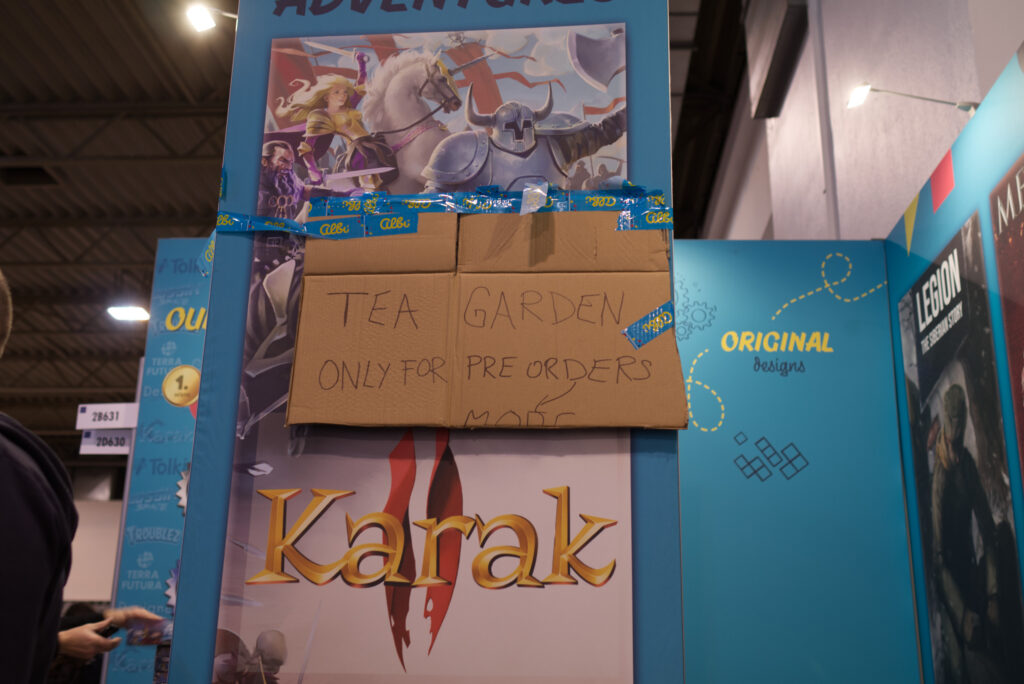
I then met up with Joshua from Neon Comet Games to receive my copy of the Roads & Boats Scenario book volume 1. I had pre-ordered this on a whim because it looked like a great way to find my way into R&B. So far, I’ve only played two games of R&B, but was a bit struggling with the competitive nature of it. The solo scenarios that come in the box on the other hand felt like playing only half a game to me and they all didn’t use the interesting expansion material. So I picked this up mainly because it looked like a great project to support and to have more input to explore R&B solo, hopefully leading to more multiplayer gaming for me as well.
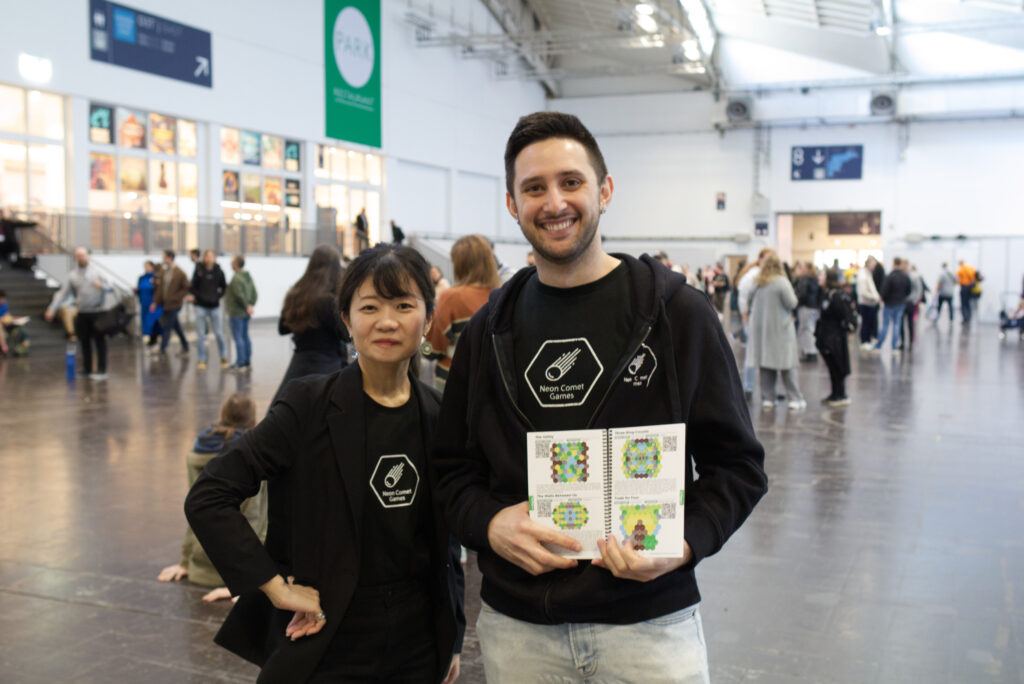
What I was completely unaware of was the amount of effort and love Joshua had put into this. Not only is there a foreword from
Jeroen from Splotter, Joshua actually flew to the Netherlands to meet up with the Splotter guys and photograph the very first version of R&B made out of wood! I had often read of this but never actually seen a picture until today. So as I was flipping through the book, I got an involuntary big grin on my face and my heart began to swell!
Not only that, Joshua tracked down some rare scenarios that were basically lost to the wider audience before, contacted members of the community and got new scenario designs from them, indexed everything, even added a few extra tiles as tear-out to the back of the book to be used with some of the scenario. Each scenario also has a QR code to lead players to a special BGG community on BGG where they can share solutions, high scores, etc.
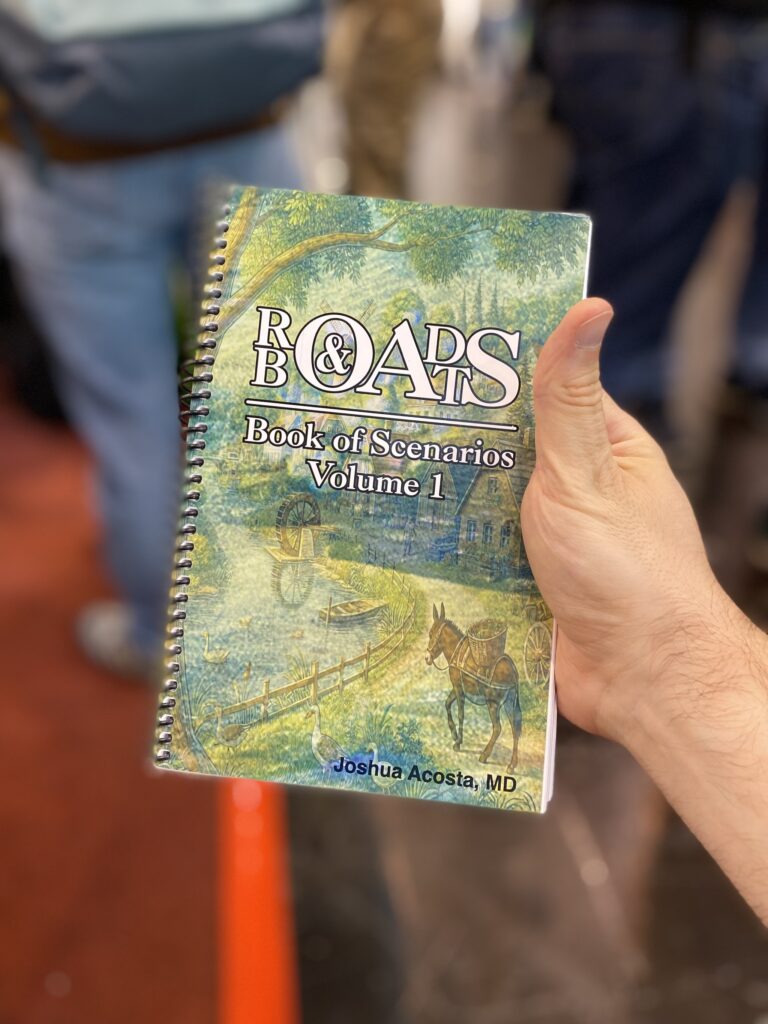
Joshua and I actually did a spontaneous interview on the book which turned out lovely and I’ll publish it as soon as I find time to transcribe it. The one downer on this story is that if you want a copy, you can’t. It was a very limited print run sanctioned by Splotter Spellen as a give away / help finance SplotterCon and Joshua was just offering the few remaining copies. Doing another print run requires a new license agreement and he’s in talks with Splotter to hopefully figure something out. As you may note, he has called it “Volume 1”, so fingers crossed this lovely, lovely community project is only the beginning.
SPIEL is a great place to meet new and old acquittances and so I dropped by PD Verlag’s booth to briefly say hi to Mac. He was very happy with the reception of 7 Empires and kept teaching it to various groups, only interrupted by fans coming up and wanting his signature.
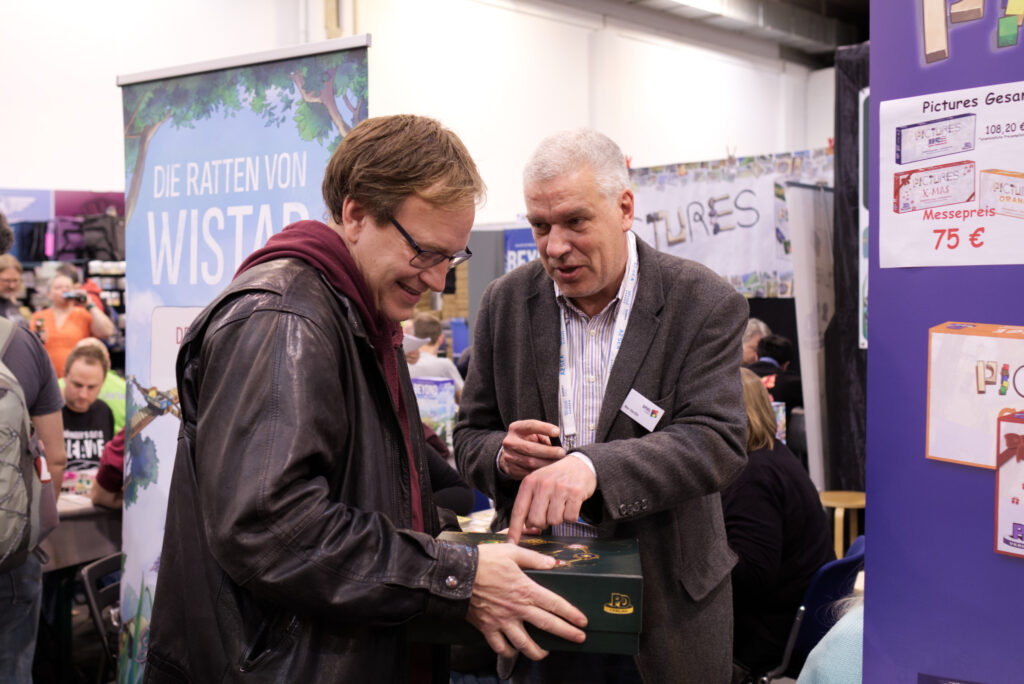
Besides all the board games from publishers on offer, there are also lots of other booths like those for second hand games or for game components for aspiring designers. Lost a green disc? This place has you covered:
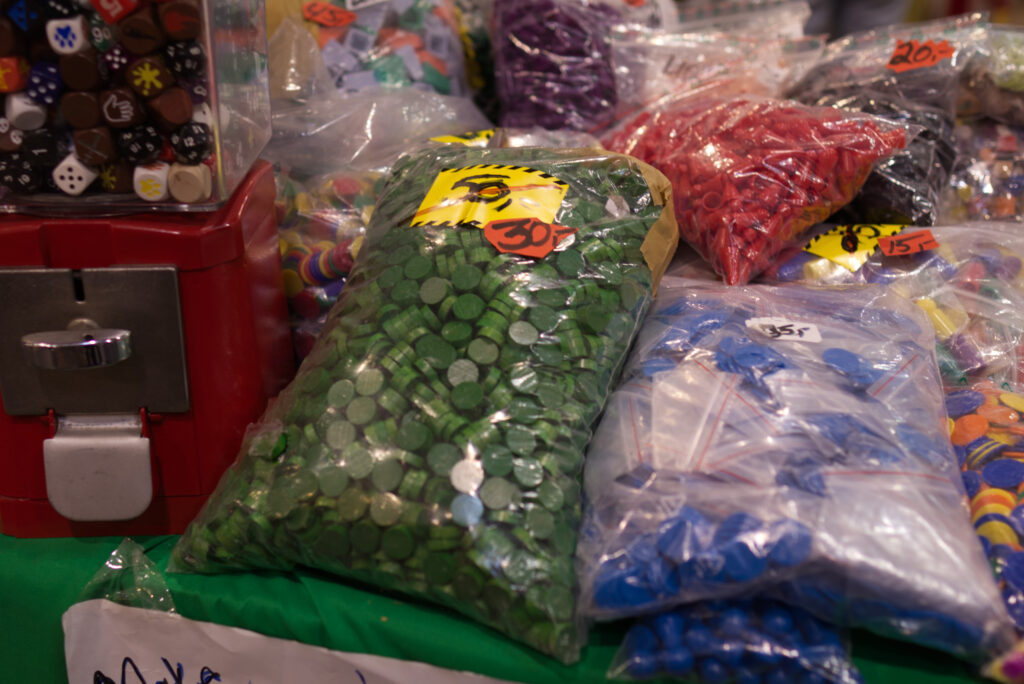
Onwards with the gaming: I stopped to play a game of Babylon which attracted many passers-by due to its table presence. I somehow had assumed from the early images that players would all build on one giant garden but it’s actually each player building their own smaller one.
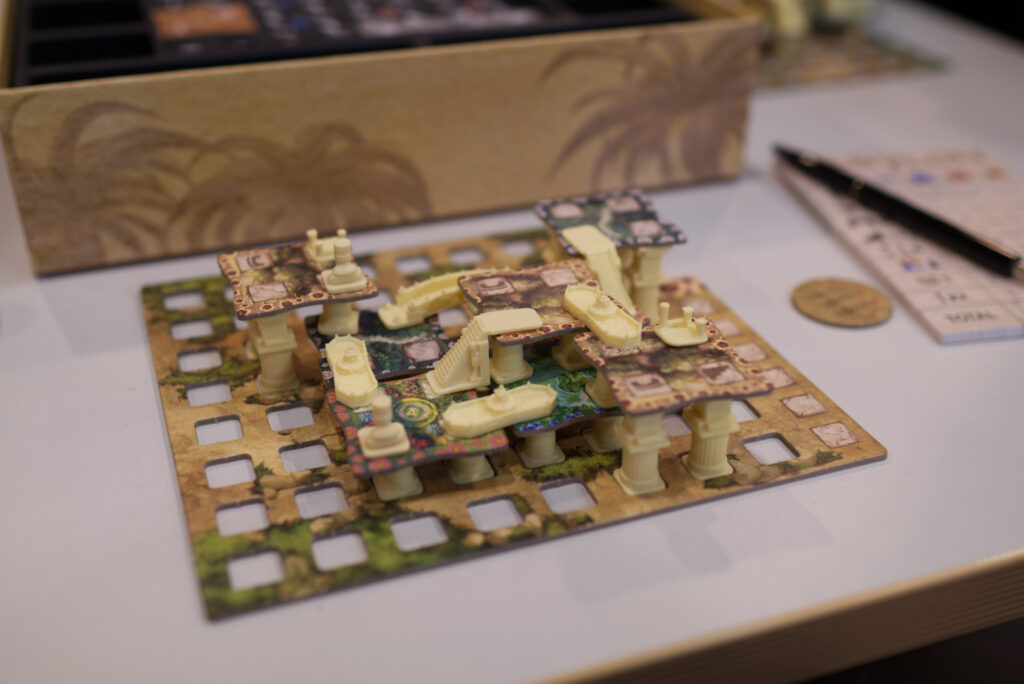
The gameplay is rather simple though unfortunately. On your turn, you draft a tile from a central display that stacks 3 layers high. Based on the levels of neighbouring tiles, the player gets a number of short 1-level columns and the tile itself which is flipped and then serves as a platform in the garden. Prop it up on columns (with the option to leave one out of four corners dangling mid-air) and then check the symbols on the tile to place decorations. A fountain for example needs to be placed on two squares on different tiles that are next to each other and show the fountain symbol, a bridge needs a gap, and stairs need to be on different levels (but both squares again need to show the stairs symbol). Final scoring basically gives more points the higher decorations are built.
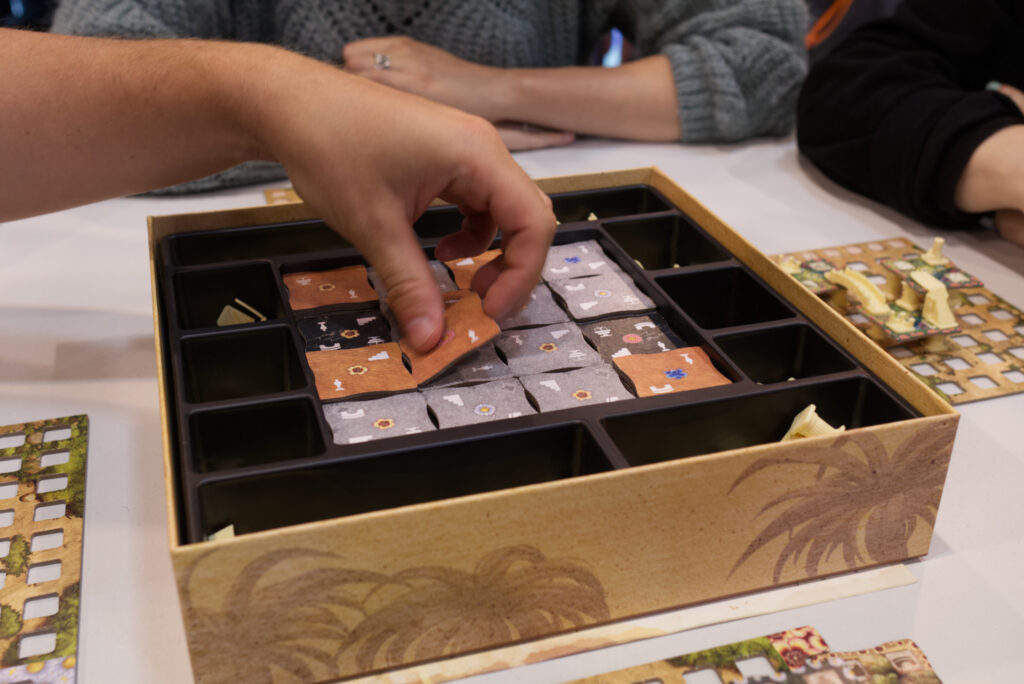
So more something for the casual gamer that loves small plastic minis. Note though that we only played a shortened version, building of course gets more complex when playing all rounds. I don’t expect there to be much depth though. It even has a “event of the round” mechanism thrown in there (e.g. get a free column) which always is a sign of enriching a low complexity system for me.
After a quick lunch break, I met up with the awesome Vangelis Bagiartakis. I always love our conversations and so we did a short interview on World Order, how it changed since last year, influences from Hegemony’s success, theme integration, and more. Again, I’ll publish it in the next few days, transcribing and editing always takes me a considerable amount of time and so is beyond what I can do in a daily blog. Side note: best booth photo-shoot background ever! Vangelis showed me a very funny picture of Tom Vasel from the Dice Tower who had visited the booth earlier.

I always love to drop by Tim Fower’s booth and check out what new things they have on offer. This year, it’s Typewriter which again is a word-building game and we are drawing chips from a bag to do so. The quality was really awesome, but I already own Paperback & Hardback and I don’t get to play scrabble-type games that often anyway, so I didn’t pick up a copy but just got a rules teach. Sounded solid, but didn’t have a wow-factor (besides those chips) that made me want to play it unfortunately.
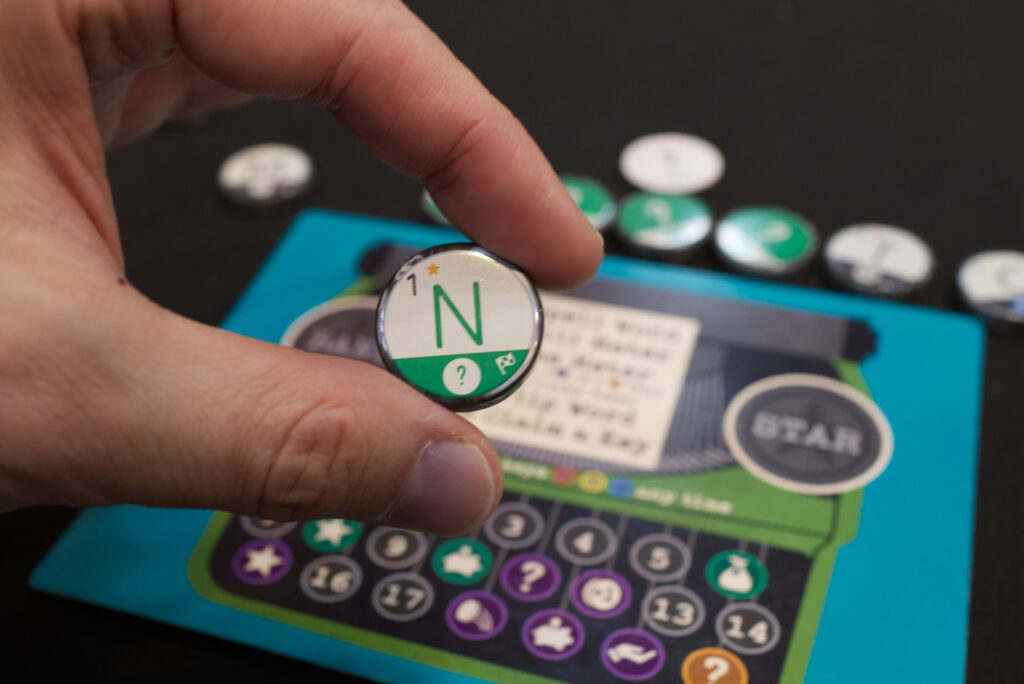
I had originally booked a demo slot for Ion Games’ Kartini for Sunday but sadly had to cancel it. The kind Matti gave me a short intro though and that made me even saddler to not be able to play it. I know it’s available on Tabletop Simulator, but I just appreciate physical copies that much more.
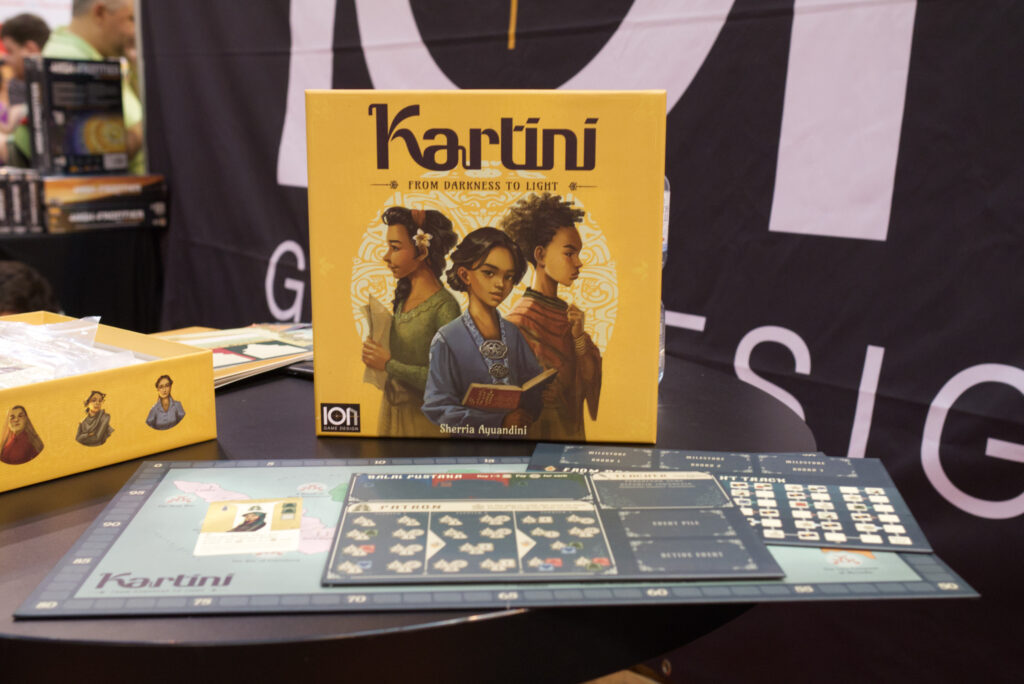
Kartini is based on historical events where Indonesia made a push to educate women in an effort to support Indonesia’s fight for freedom. Very interesting theme, has co-op and competitive mode (so I should be able to solo this), great board and art production. The crowd funding campaign is currently in production and I hope I’ll be able to grab a copy once it becomes available on Ion Games’ website because I unfortunately missed out on the Kickstarter. Would have loved to borrow that preproduction copy for a week or two! 😀

Onwards to Game Brew and to check out Bone Wars. I made the strategical error of shortening the wait time for the previous group to finish up by grabbing a nice triple beer at their booth. Memo to self: don’t drink strong beer when you’re about to get a rules teach on a heavy euro 😂
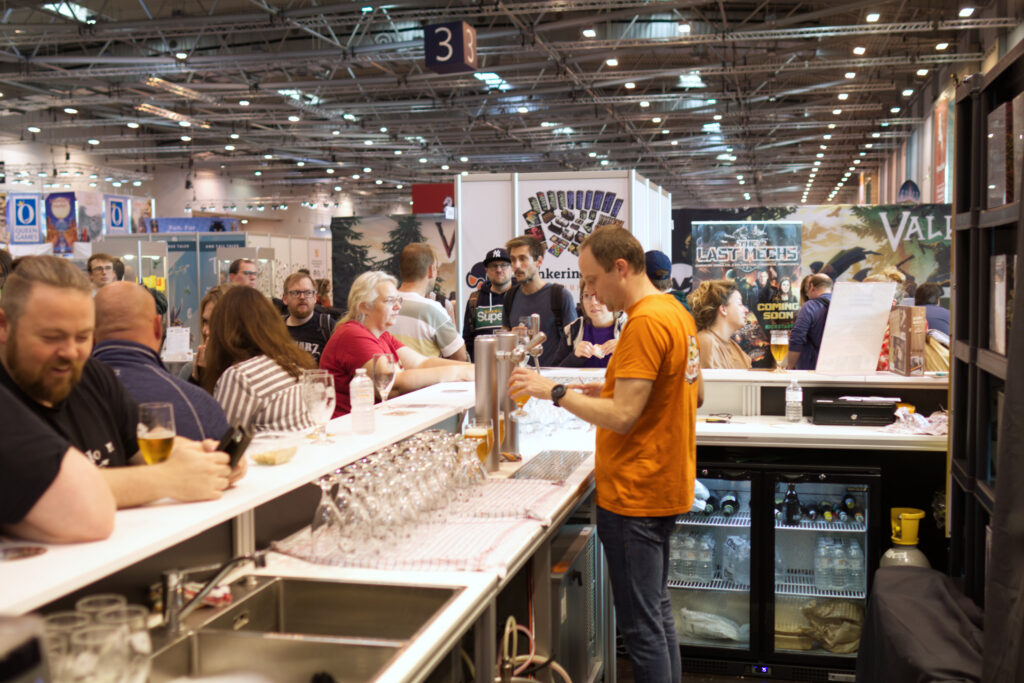
Bone Wars has a lovely theme of supporting one of two competing palaeontologists by digging fossils and using them to either proof or disprove theories and publications. Unfortunately, the beer kicked in and it sounded very Euro-y convoluted of “and you have this, and you have this, and you have this”, so I bailed out after the rules teach to not drag down the whole table. Sounded like a solid design though, so I chuck this up as “not for me, but might be for you”.
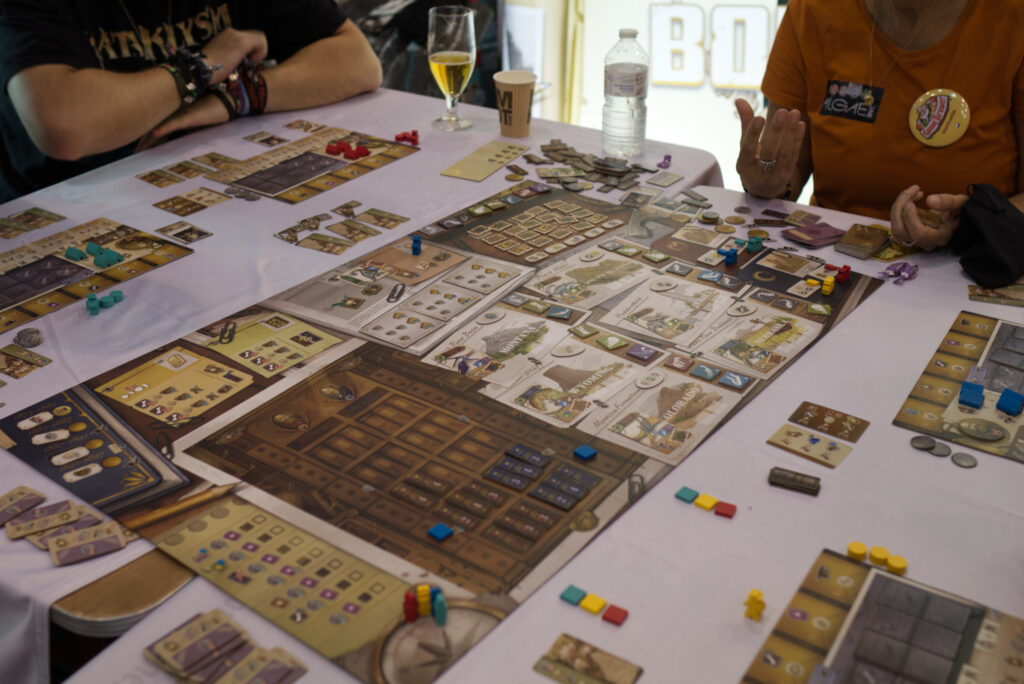
I headed back to the hotel for a much needed quick Power Nap before meeting up with Board Game Diaries to play my copy of Altay. In Altay, each player plays an asymmetric faction (a unique 10-card starting deck) vying for control and cultural advancement. It’s best described as a deck-building area control game with light civilisation building elements that with a little practice can be played in an hour or so. It really is rather quick.
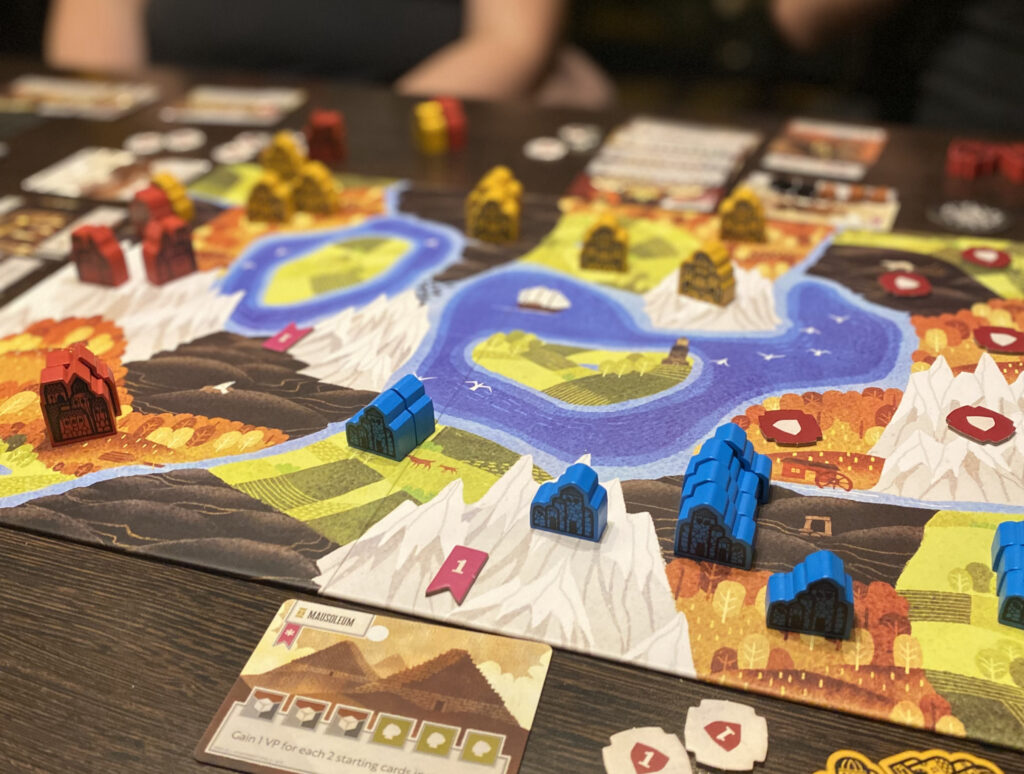
On your turn, you draw five cards from your deck, use the cards to fuel some basic actions (attack, buy new cards, start a new technology research, …) and gather resources. Combat is pretty simple: attacker uses number of settlements plus attack symbols on the cards they play and defender does the same with shield symbols. There are also only 10-ish types of cards players can buy, so there isn’t that much variety in how the decks can evolve: either you’re the more fightery player, the more expanding city-building player, or the economy-heavy player. There are a set of technologies that can be researched, but it’s multiples of each and there are only few different once per level. E.g. all players can research engineering which allows removing a card from play and thus thinning the deck.
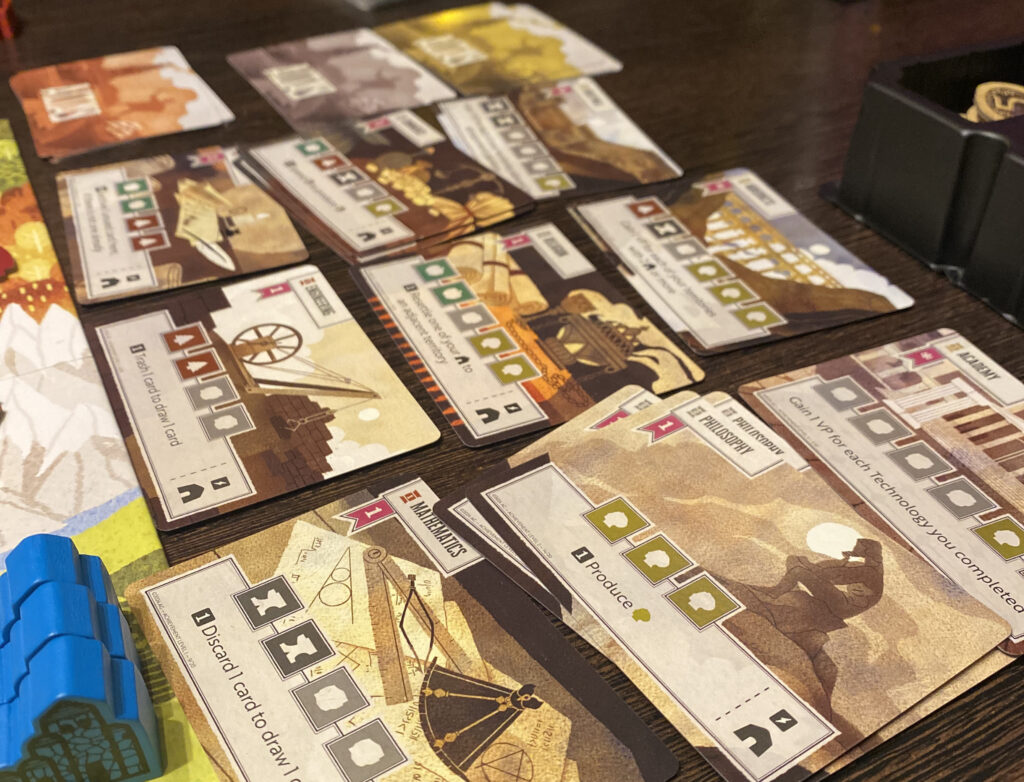
I’m still unsure about this game. It’s interesting, having a “bash your neighbours head” in this quick format is nice and there were some opportunities for improvement we only realised after playing it. But the suggested adaptions for three players to the map felt odd (one player is wedged between two others) and there were a few other head scratchers. Right now, I would say if it weren’t for the art, we wouldn’t be talking about this game and probably makes most sense with four players. But as always, too early to tell, this will need a lot more plays. Unfortunately doesn’t come with a solo mode and I’m not sure I will get this to the table with my play group with so many other more-exciting-to-me purchases made at SPIEL.
And that wraps up day 3. I’ll now do the packing and head over to the convention as this is my last day at Essen before traveling onwards. Super happy that I got a nice bunch of interviews already recorded, so with that and the games I bought, I’ll be able to do some further post-Essen reporting next week. But for now, on to day 4 for SPIEL Essen 2024! As always, let me know what games you want me to check out for you.
